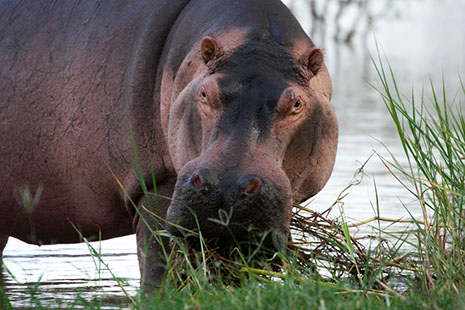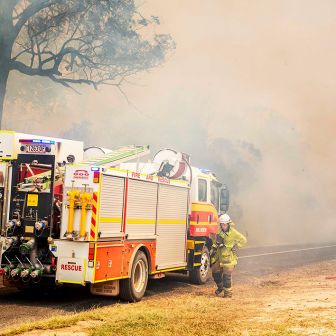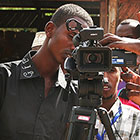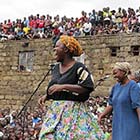WALK AROUND a shopping mall in Nairobi these days and there’s a good chance you’ll be approached by a young salesperson selling USB modems on behalf of a mobile phone operator. It’s a reminder that the global tentacles of under-sea fibre-optic cable – the key to fast, affordable internet – have finally reached east Africa, the last significant inhabited part of the world to be connected.
A little over a decade ago there were no mobile phones in Kenya. The landline network was small, unreliable and subject to government abuse: under Daniel arap Moi, president from 1978 until 2002, only government agencies were allowed the privilege of a fax connection. Today, I sit in my office at home in a Nairobi suburb, drinking coffee made from excellent locally grown coffee beans (in Moi’s time I’d have been drinking expensive, imported Nescafe) and watch streaming news broadcasts on my laptop. I could be anywhere in any first-world city across the globe.
And then I look out the window. A troop of Sykes monkeys is swinging through the trees in the garden, driving the dogs mad. An iridescent sunbird lands on my windowsill, considering me for a second before darting off. Yellow-billed kites dance in the thermals above the tree canopy, calling out to one another. I am reminded that I am in Kenya, a modern country, a country still wild.
LIVING AND WORKING in a place like Kenya it’s easy to fail to appreciate what’s on your doorstep. You make excuses for not getting out and seeing more: you’ve been travelling a lot for work, the roads are bad, you’ve got a baby whose sleep patterns will be disrupted. And then your excuses run out: newspaper budget cuts mean you’re not travelling outside Kenya as much, the roads are actually improving, the baby is growing up.
My mother was due to visit from South Africa and so my wife and I made plans for a road trip. One morning last month we packed our baby’s cot and a few bags into our old 4X4, headed off through the lush highlands, and then suddenly plunged into the Great Rift Valley. Driving through arid lands a few hours later we glimpsed in the distance Lake Baringo, notable for its spectacular birdlife and for the people who live there.
The Njemps are closely related to the more famous and numerous Samburu and Masai ethnic groups. All three are pastoralists, but whereas the Samburu and Masai eat mostly meat and avoid fish, the Njemps have made fishing part of their lives, paddling around Lake Baringo in reed boats, hauling in tilapia, catfish and other species. In recent times, however, overfishing has led to reduced catches in the lake, and many locals see tourism as offering a better future.
Wilson is one of them. As a young boy, walking barefoot along the thorny lakeshore with the family goats, he noticed how groups of white people would spend hours staring through binoculars, methodically ticking off names from the list of 470 bird species recorded in the area. He started tagging along on walks with a British expatriate who wrote the most popular guide to bird-watching in east Africa and was generous in sharing his knowledge. Today, Wilson is an expert in his own right, having seen all but a dozen of the recorded species. My mother and I took an afternoon walk with him where he pointed out perhaps forty different birds, from paradise flycatchers to kingfishers and the beautiful Heuglin’s Courser, so camouflaged as it squatted in the dust just a few metres away from us that only Wilson could see it with the naked eye.
We had rented a house just forty metres or so from the lakeshore, alongside a campsite popular with backpackers and overland tourists. When evening approached a guard armed with a small wooden club came to introduce himself. His name was Samuel and he was Wilson’s brother. Incongruously, he was also a history buff, quizzing us about South Africa – how is President Zuma doing, what about F.W. de Klerk, how are the relations between Zulus and Xhosas? As the light faded we watched as several large hippos slowly emerged from the lake to begin grazing on the grass. They would eventually come up past the house, Samuel said; we might even hear their noisy chewing if we woke up during the night.
We didn’t, but one of the campers did. A group of young Dutch tourists had arrived at the camp by car in the early evening. The driver was exhausted from the journey. (Despite the improved roads, the Kenyan style of driving is terrifying.) So the Dutchman pitched his tent on the grass in the middle of the campsite and settled in for an early night while his friends had dinner and drinks in the bar. At around midnight he was awakened by the sound of a large animal grazing nearby. According to accounts from other campers the following morning, the Dutchman started to move around in his small tent, at which point the hippo attacked, biting him through the canvas. His screams alerted the night guards. Samuel struck the hippo on the head with his club, and the animal turned to face him. Fortunately other guards had also arrived, and the hippo made its way back to the water.
The injured man, wrapped in the remains of his shredded tent, was bleeding from bite wounds on the leg and arm. He was rushed by car to hospital in Nakuru, a ninety-minute drive away, where he received dozens of stitches and was declared out of danger. By morning in the campsite there was no sign of what happened. His travel companions had packed up everything and left. That evening more campers arrived, including a group of middle-aged Dutch tourists travelling in a bright-orange overland bus. Tents were pitched, though a bit further from the shoreline. Samuel was back on duty.
Stories of foreigners sometimes make the local press so when I arrived back in Nairobi I looked for reports of the incident. I found nothing. Either it had happened in a remote enough place that it had passed the media by or, more likely, it was simply too routine a story. Attacks by wild animals are so common that to make the news there has to be some extraordinary element – the villager who was dragged up a tree by a massive python and freed himself by biting back (perhaps a tall story, but one that found its way around the world after Reuters picked it up); the herder who killed a lion with his bare hands only to be fatally set upon by a pack of hyenas.
This human–wildlife conflict is not unique to Kenya in Africa, of course. But Kenya’s conservation policies mean that the likelihood of man and beast coming face to face is greater than elsewhere. The country’s national parks are not fenced off, so animals come and go as they please – even in Nairobi. A zebra crosses the road leading out of the main airport, delighting first-time visitors in their khaki safari jackets. In a nearby slum, residents stone to death a “leopard” that has allegedly been killing chickens; in fact, it is a genet cat. Beyond the city, elephants trample a farmer’s crops and sometimes the farmer too. Lions kill a herder’s cows. Then a train hits five elephants on the railway line and villagers feast. Lions are poisoned using pesticide.
As time goes on, and the human population grows, these clashes are becoming more frequent. The referee is the Kenya Wildlife Service. Unlike in other top safari destinations, such as Tanzania and South Africa, hunting is illegal in Kenya and only wildlife rangers are allowed to kill a rogue animal. When the tables are turned and there are civilian casualties the KWS pays compensation to the victim’s family – about A$3000 for the loss of life. In the contest between man and beast, man has the most points – though sometimes the hippo wins.
BUT THE COUNTRY is so dry at the moment, in the midst of the worst drought in a decade, that neither humans nor animals are faring well. Nearly ten million people – almost one in three Kenyans – do not have enough food; four million of them are on emergency food aid. A local newspaper reported that several dozen elephants had died of what the KWS suspects is starvation, as last happened in the 1960s and 70s.
But it’s the death of hundreds of thousands of cattle in recent months that has captured the greatest attention. Most of them belonged to neglected pastoralist groups in already arid parts of Kenya – people for whom the animals represent a fragile safety net. To its credit, the Kenyan government launched an operation to buy weak cattle from the herders for 8000 shillings (about A$120) apiece, which would have given them a little capital for eventually rebuilding their herds. The idea was that the cattle would be fattened up a bit and then slaughtered, but something went badly wrong.
I received a call from one of my editors saying Reuters had striking pictures of hundreds of dead cows in a dusty field. Could I investigate? It turned out that the cows had been purchased by the government and trucked for hundreds of miles from the northeast to a Kenya Meat Commission depot at the edge of Nairobi. There was not enough food and water on the trucks, so many of the animals died on the way and had been dumped on the ground. Some of those that managed to survive the road journey soon died because there was insufficient pasture in the holding area. All these animals may have perished in the drought anyway, but the government had speeded their demise. Meat that could have been given away to hungry people was now useless.
Not surprisingly, the operation has caused anger and embarrassment, especially given that the government has been asking donors for urgent financial help in feeding the nearly ten million Kenyans who lack adequate food. It tends to confirm what’s become conventional wisdom among people who’ve studied famine – that it’s how governments react to drought, rather than drought itself, that determines whether people starve.
AFTER RETURNING from Baringo we drove down to the Masai Mara, Kenya’s world-famous reserve, and booked into a lodge just outside one of the main gates. Near our camp there were vast herds of cows. Some had walked hundreds of miles to get there, their herders encouraged by reports of grazing available in the reserve. Normally cattle are not allowed in the park – no tourist wants to see cows among the zebras. But with the drought situation so grave the Masai have been given permission to take their animals into the reserve at night.
And so in the late evening, the time the predators begin to feed, herders wrapped in red blankets and armed with long spears led their cattle into the park. Animals, domestic and wild, were battling for survival together. In our tents at five in the morning we were awakened by the soothing sounds of bells ringing in the distance. The cows were coming home. •




